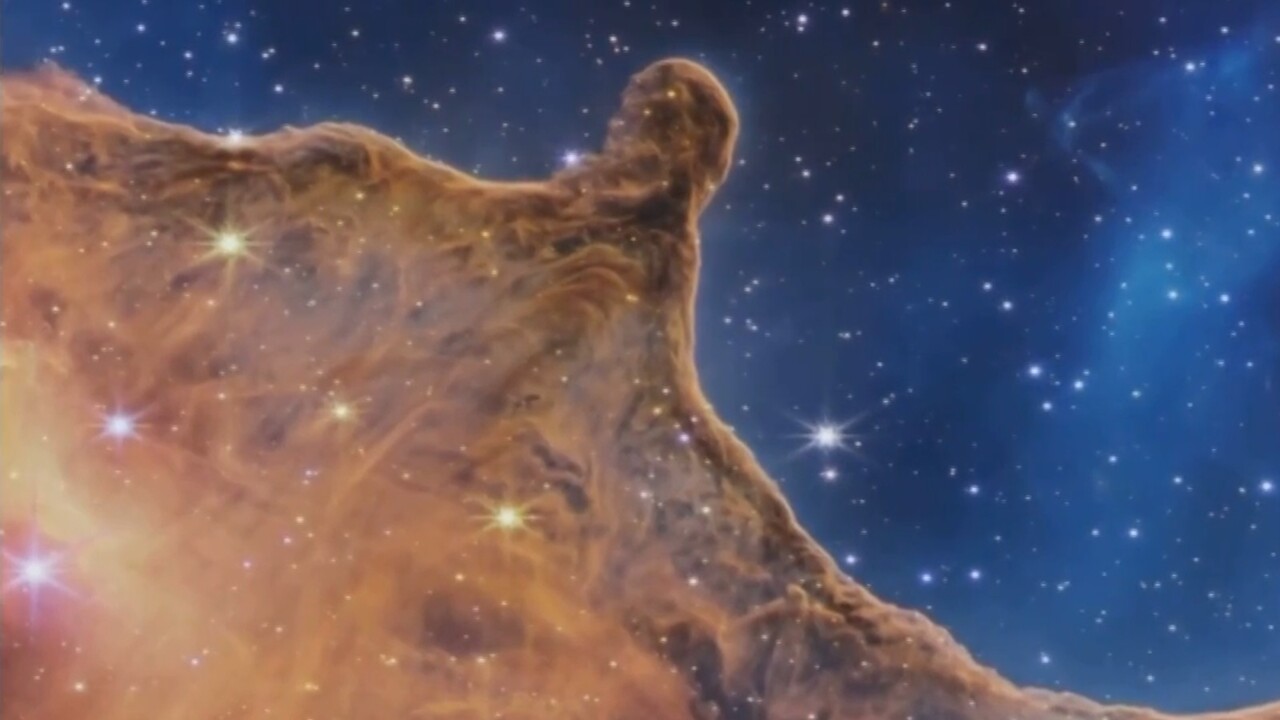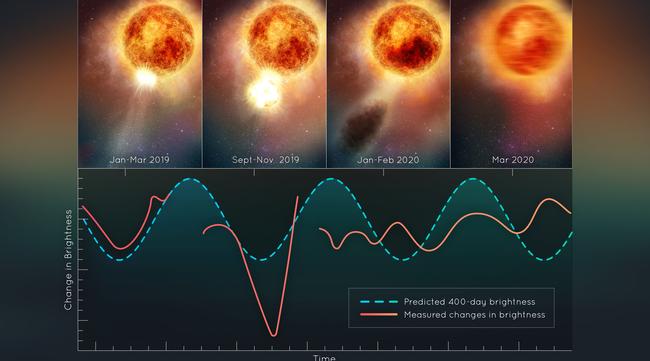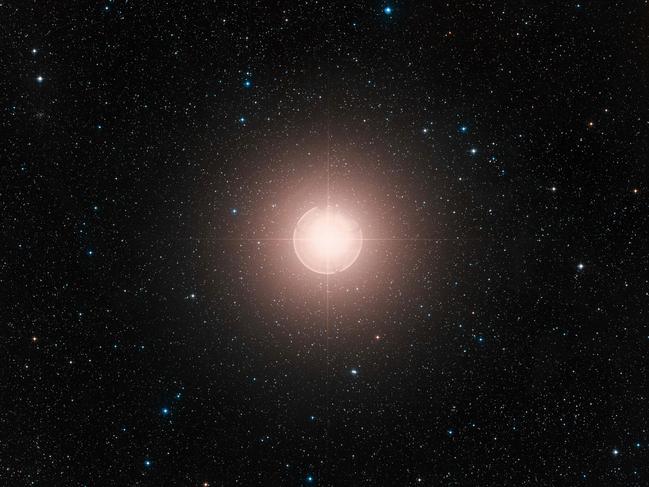NASA reveals images of ‘never before seen’ titanic eruption of supergiant star Betelgeuse
One of the brightest stars in our sky just gave an almighty titanic “sneeze” – ejecting mass 400 billion times that of a solar flare.

Space
Don't miss out on the headlines from Space. Followed categories will be added to My News.
The Hubble Space Telescope has captured a never-before-seen phenomenon following a titanic ejection of Betelgeuse’s surface calculated at 400 billion times the mass of a solar flare.
On Friday, NASA revealed spectacular images of Betelgeuse – a star you can commonly see in the night sky – “blowing its top off” in a gigantic surface mass ejection (SME) which saw the star lose a significant portion of its visible surface.
It’s the first time scientists have been able to witness and chart this phenomenon – which is understood to be an indication of a star in its death throes.

Andrea Dupree of the Center for Astrophysics at Harvard & Smithsonian said the eruption was just one of other “unusual” processes Betelgeuse is currently displaying.
“Betelgeuse continues doing some very unusual things right now; the interior is sort of bouncing,” Ms Dupree said.
“These new observations yield clues as to how red stars lose mass late in their lives as their nuclear fusion furnaces burn out, before exploding as supernovae,” NASA added in a statement.
“However, Betelgeuse’s surprisingly petulant behaviour is not evidence the star is about to blow up anytime soon. So the mass loss event is not necessarily the signal of an imminent explosion.”
The star, which is an identifiable part of the Orion constellation, noticeably dimmed in 2019 for months – baffling both scientists and backyard observers.

The dimness may be bcz Betelguese sneezed instead of exploding and that burst of material travelled in the direction of our observation and in the way it cooled, got opaque & blocked the readings from Betelguese. Anyways, I wish I see you going supernova in my lifetime. Please.
— Prashant Arun Srivastava (@sanely_Prashant) September 25, 2020
But with the new information captured by Hubble, the cause of the stars temporary dimming was due to a huge dust cloud that was formed as a result of the SME – blocking the star’s light.
“Weighing roughly several times as much as our Moon, the fractured piece of photosphere (visible surface) sped off into space and cooled to form a dust cloud that blocked light from the star as seen by Earth observers,” NASA explained.
The eruption is of significant importance to astronomers and astrophysicists who continue to piece together exactly how a star dies.
“We’ve never before seen a huge mass ejection of the surface of a star,” Ms Dupree said.
“We are left with something going on that we don’t completely understand. It’s a totally new phenomenon that we can observe directly and resolve surface details with Hubble. We’re watching stellar evolution in real time.”

Our very own sun regularly ejects small amounts of mass in the form of solar flares or coronal mass ejections (CME), which pale in comparison to the sheer size and gargantuan mass Betelgeuse managed to lose.
The significant difference between the two has lead scientists to believe that the Betelgeuse eruption might be a completely different event to that of CMEs.
And part of that difference is the fact that Betelgeuse has stopped pulsating – at least for now.
For 200 years, astronomers observed Betelgeuse’s fluctuating brightness, noting that the star “pulsated” in 400 day cycles. The pulsing, which is caused by the star’s interior convection cells, has stopped in the wake of the powerful eruption and may be due to the cells “sloshing around like an imbalanced washing machine tub”, Ms Dupree has suggested.
“Betelgeuse is now so huge now that if it replaced the Sun at the centre of our solar system, its outer surface would extend past the orbit of Jupiter,” NASA said.
Ms Dupree has long observed Betelgeuse’s ageing process having previously used Hubble to resolve hot spots in the star’s surface in 1996 – which was also the first image captured of a star that wasn’t the Sun.
More Coverage
Originally published as NASA reveals images of ‘never before seen’ titanic eruption of supergiant star Betelgeuse




